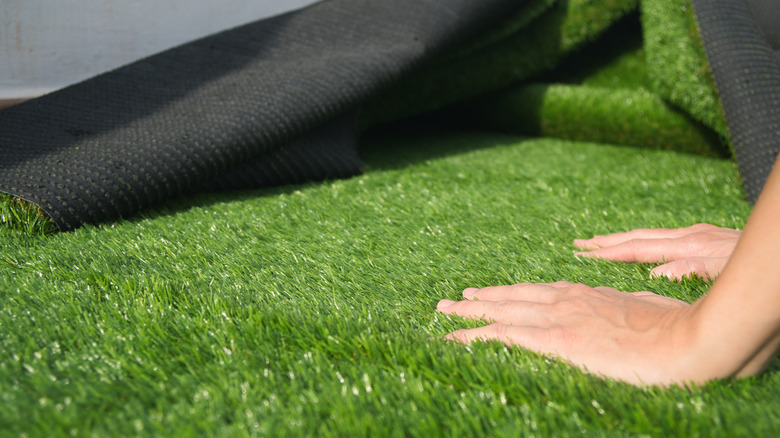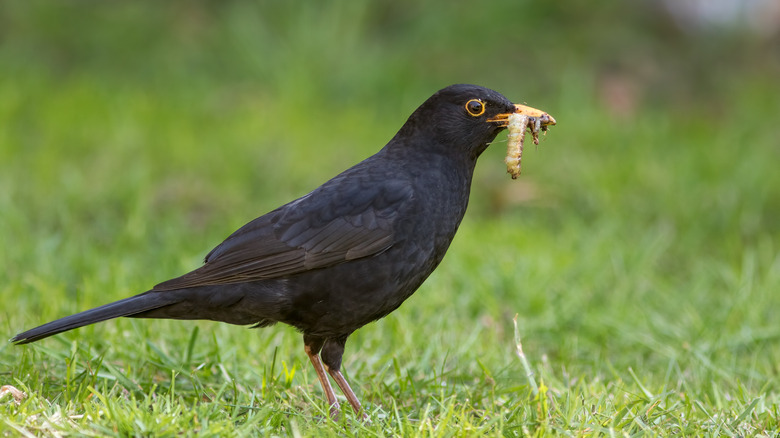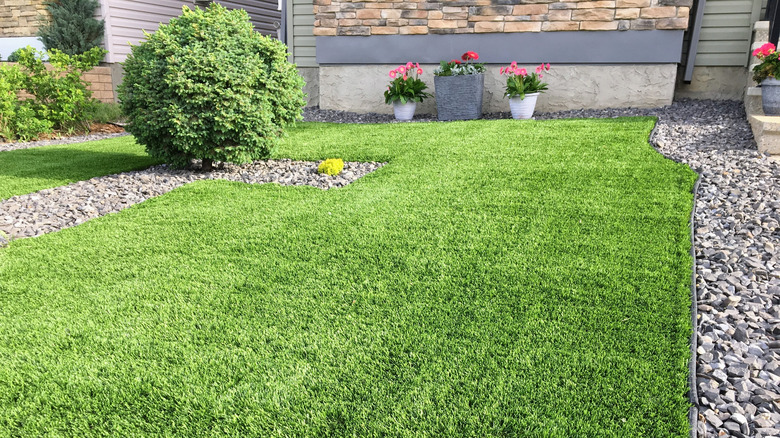Why Plastic Lawns Are Even Worse Than You Think
Recently I saw an account on social media that consisted of "bad" lawn photos (the descriptor was stronger than that, actually), and nearly all of the pictures were of plastic lawns in the U.K. They've become more popular there in recent years, and when I was in London in autumn of 2023, I saw a number of them both in the front of houses and in the "beer gardens" of pubs. I became curious about this growing trend, and its implications. It turns out there are many problems with plastic lawns, even more than I first assumed.
First of all, what is a plastic lawn? Also called synthetic or artificial turf, this material has been around for a while — you've probably seen it used for commercial properties and athletic fields. It can prevent injuries during sports events in rainy weather, for example, when mud can cause slipping and falling. But in recent years, this lawn material is becoming more common for home use.
Synthetic turf is not unlike a lawn made of sod pieces. The main difference is that sod is laid in long strips (usually about a foot wide) while plastic can be cut to fit from larger pieces. Plastic products are a bright spring green color, and this never changes, which may be part of the appeal. Not needing to water, weed, or mow the lawn may also seem beneficial, and there's no need to reseed or apply fertilizer. But there are downsides.
No bugs, no birds
Ahh, there's a problem you may not have thought of — no bugs. At first this may seem like a good feature. After all, not having bugs around to spoil your backyard barbecue seems like a plus. But insects are crucial for maintaining landscape biodiversity. Consider this: Fewer (or no) bugs means fewer (or no) birds visiting your yard. No birds, no birdsong (I would miss this immensely, personally). Also, no bugs and no birds means no pollinators, so if you're growing food crops in containers on top of your plastic lawn, they won't thrive as well.
Some say there are ecological benefits to not using chemical fertilizer, pesticides, and gasoline-powered equipment. But plastic turf also doesn't allow microorganisms to live beneath the lawn, and over time, this causes soil culture to depreciate and may affect drainage and other issues. Speaking of drainage, plastic lawns don't absorb rainwater — you need to install a separate structure to capture run-off.
The lack of drainage also applies to pet waste, which must be cleaned separately from the plastic surface if you have a dog or cat that relieves themselves on your lawn. Sure, an artificial material may be less vulnerable to digging or other damage from your special friends. But the unnatural feel of the plastic may also deter them from wanting to spend time in your yard.
Other downsides
While it may be tempting to have a no-care lawn, there are other downsides to choosing this feature. The initial installation cost can be quite expensive, averaging between $6-$20 per square foot. The long-term savings on lawn maintenance may make this price seem worth it. Some sources say this one-time expense can be offset within 3 to 7 years, given the savings on labor and materials for upkeep. But as with all home maintenance issues, unexpected problems can arise.
There are also comfort concerns with artificial grass. Plastic doesn't have the softness of a natural lawn, which is a downside for those who enjoy going barefoot, myself included. Synthetic turf also doesn't have the cooling properties that natural grass does. In fact, this petroleum-based material actually absorbs heat and, on a hot day, can make your yard feel even hotter. It's possible to mitigate this effect with proper insulation measures, but this also drives up the cost of installation.
Finally, although there may be less labor needed for lawn mowing or weed control, artificial lawns still require deep cleaning several times a year to remove debris such as leaves, pine needles, rocks or other things that may accumulate. Before installing an artificial lawn to cut down on maintenance time, consider the pros and cons in terms of expense, aesthetic, comfort, environmental sustainability, and hidden maintenance needs. You may decide a natural lawn is your best option after all.


